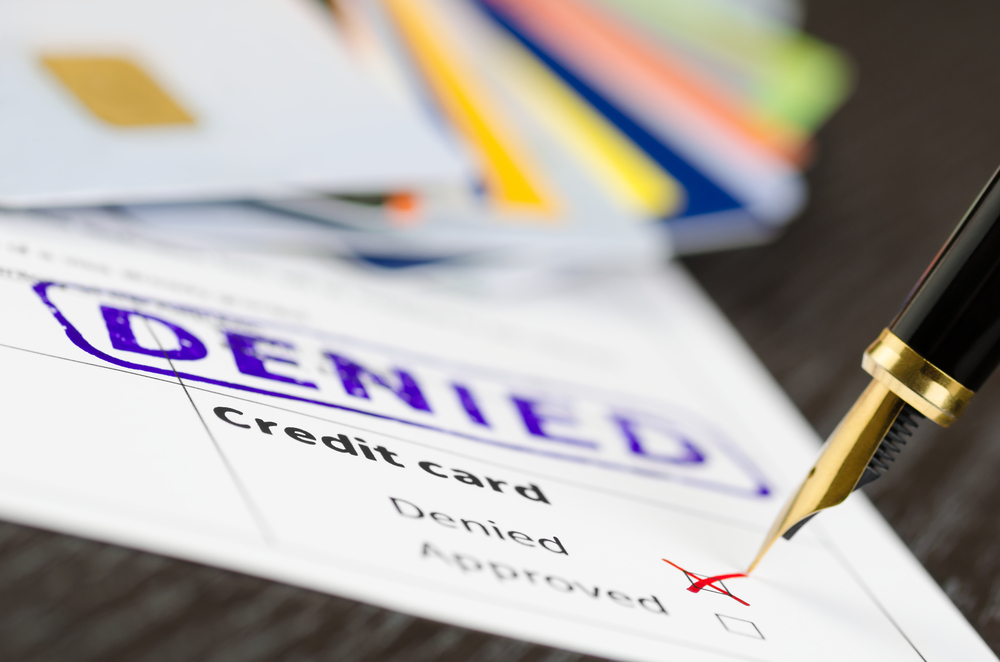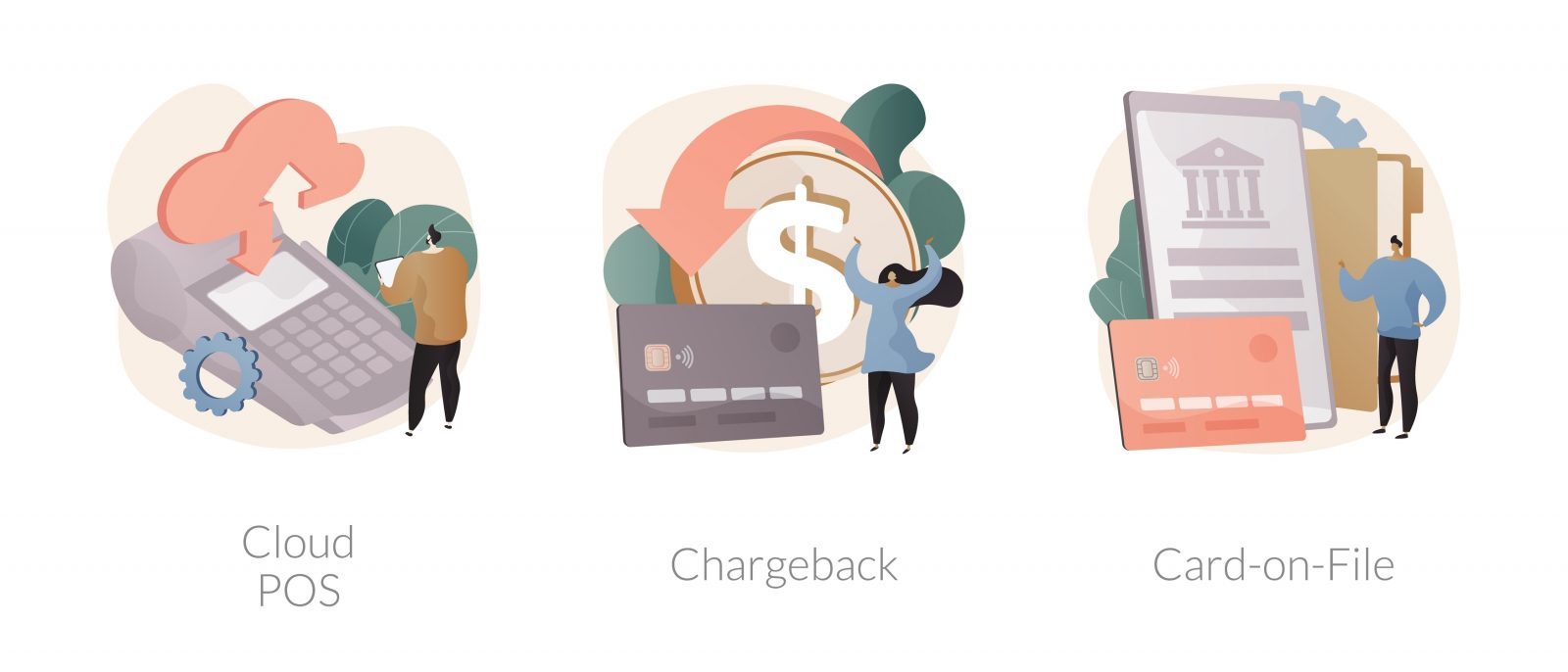Today we are exploring the significance of a consumer protection tool that has grown increasingly important to businesses with merchant accounts. More specifically, today we are discussing chargebacks. A chargeback is a reversal of funds, whenever a debit or credit card is used, after a purchase of goods or services has been made. For this reason, having a clear strategy for chargeback management is of supreme importance to any business, online or other.
Chargebacks are usually initiated by the cardholder when a dispute occurs over a card sales transaction.They can be an important defense mechanism in protecting consumers and cardholders from unscrupulous scammers, bad state actors, and other cyber criminals perpetuating identity theft, fraud, and other illegal and unauthorized uses of a person’s Personal Identifiable Information (PII).
Despite the kinetic benefits of chargebacks, overuse of initiating chargebacks and in some cases seeking to obtain fraudulent chargebacks by customers, has created challenges with respect to merchants who want to implement stable and streamlined chargeback prevention systems and procedures.
To achieve this, we will discuss the process of and reasons for chargebacks, strategies for chargeback management and chargeback representment, best practices for preventing and disputing chargebacks and the role of technology in the chargeback management to effectively deal with chargebacks.
The Chargeback Process
Let’s develop an outline for the general chargeback process. Customers, merchants, and banks all play a role in chargebacks.
- Debit or credit card transaction is processed. A customer purchasing goods and services with a debit and/or credit card has the ability to dispute a transaction for reasons such as fraud and errors in billing. A customer typically has at least 60 days to file for a chargeback due to billing errors or fraudulent purchases. If the chargeback dispute is related to a complaint about a good or service, then customers have up to 120 days to file for a chargeback.
- Cardholder files for a chargeback with their card issuing bank. Cardholders can dispute a transaction by contacting their card issuing bank via phone, email, or by filling out an online form. Customers are typically encouraged to send over their card issuing bank any supporting documents related to the validation of the chargeback such as copies of any contracts, invoices, receipts, and any other communications had with the merchant.
- Chargeback process starts.The card issuing bank may provide the cardholder a temporary credit for the disputed transaction in the interim period while the chargeback process inquiry is underway.
- Cardholder’s bank sends chargeback details to the merchant card processing bank. Merchants have the ability to provide supporting documents and dispute chargebacks through chargeback representment.
- Merchant card processing bank forwards chargeback dispute to merchant. Merchants must respond back to chargeback within the given time frame. Failure to do so would result in a chargeback being granted to the customer.
- Merchant accepts or rejects the chargeback:
- If accepted, merchants will pay the disputed chargeback amount
- If rejected, merchants will prepare supporting documentation to respond to the chargeback and submit it to the merchant card processing bank
- A final decision is made: The card issuing bank will evaluate the chargeback evidence and make a decision in favor of the customer or merchant. Dispute investigations can take up to 90 days to resolve.
- Arbitration: If a merchant or the customer is unsatisfied with the outcome of the investigation, an arbitration process can be initiated where the chargeback is taken to the associated credit card network (Visa, Mastercard, American Express, etc.) for a final decision.

Effective Chargeback Management: Tips & Best Practices
Merchants have a variety of methods that are simple and effective. One way is by partnering with a merchant account broker that demonstrates devotion to your experience, with the financial technology platform that designs custom solutions and helps businesses reach their goals faster.
Other ways of implementing successful chargeback management strategies include:
- Communicating with customers: Being responsive to customer inquiries, timely addressing customer issues, and proactively monitoring for product or service complaints are just a few of the ways that illustrate how effectively communicating with customers can reduce the number of chargebacks that are filed due to cardholder or service disputes.
- Establishing clear refund and return policies: Effective refund policies should be easily accessible on a company’s website, written in clear and concise language, and should include contact information for customer service and support. Refund policies should clearly state what items are eligible for refund or a return and the specified timeframe for the refund/return request.
- Educate your employees about chargebacks and how to prevent them: A well-trained staff who is educated about their role and importance in the chargeback process can ensure merchants are managing their chargebacks.
- Maintaining proper business transaction records: This helps to ensure that merchants can provide the financial records needed to validate transactions tied to any chargebacks and successfully recover any lost revenue from chargeback disputes.
Review your chargeback reason codes: Regularly review chargeback reason codes to identify areas of improvement in product quality, service offerings, or overall customer experience.

What Is Chargeback Representment?
Merchants who have a firm understanding around why customers initiate a chargeback can challenge this through chargeback representment. Chargeback representment is the process by which merchants are able to respond to chargebacks via a chargeback dispute, validating chargeback transactions and recovering any lost revenue from the chargeback.
Chargeback Prevention
Merchants also have a number of fraud prevention tools and identify verification methods that can be employed to enhance chargeback prevention. These tools include:
- Address Verification Service (AVS): fraud prevention tool utilized by credit card processing and issuing banks for merchants. AVS compares billing addresses provided by the customer to the billing address on file with the issuing bank. This greatly enhances the ability to detect unusual and suspicious credit transactions and prevent fraudulent chargebacks.
- Card Security Code: This refers to the three- or four- digit code printed on the back of most credit and debit cards. The sequence of numbers is used to verify that a customer is in possession of a card.
- 3-D Secure 2.0: 3DS2 is a security protocol that adds an additional layer of authentication to online transactions. 3DS2 prompts the customer to enter a one-time password (OTP) that is generated by their issuing bank. This helps to ensure that the customer is who they say they are.
- Device fingerprinting: Device fingerprinting collects information about the customer’s device, such as the IP address, browser type, and operating system. This information can be used to identify fraudulent transactions, as fraudsters often use stolen or compromised devices.
- Velocity limits: Velocity limits set a maximum number of transactions that can be processed from a single device or IP address within a certain period of time. This can help to prevent fraudsters from making a large number of fraudulent transactions before they are detected.
- Fraud scoring: Fraud scoring models use a variety of factors, such as the customer’s location, transaction history, and device information, to assess the risk of fraud. Merchants can use fraud scores to decide whether to approve or decline a transaction.

Chargebacks Reason Codes
There are different chargeback reason codes that card issuing networks (American Express, Discover, Mastercard, Visa, etc.) use when going through the dispute process.
There are a number of reasons for chargebacks. The most common reasons include, fraud, authorization, processing errors, cardholder and service disputes, and other chargeback topics covered in greater detail further on within this article.
Moreover, each card issuing bank has different chargeback reason codes, different rules that apply to their specific chargeback process and payment network, as well as other key considerations that merchants with the knowledge of, can utilize to their business’s benefit in the aiding in creating effective chargeback management strategies.
Card Network Chargeback Reason Codes
Authorization
- A01 – Charge Amount Exceed Authorization Amount
- A02 – No Valid Authorization
- A08 – Authorization Approval Expired
- C02 – Credit Not Processed
- C04 – Goods / Services Returned or Refused
- C05 – Goods / Services Cancelled
- C08 – Goods / Services Not Received or Only Partially Received
- C14 – Paid by Other Means
- C18 – “No Show” or CARDeposit Cancelled
- C28 – Cancelled Recurring Billing
- C31 – Goods / Services Not As Described
- C32 – Goods / Services Damaged or Defective
Inquiry/Miscellaneous
- M01 – Chargeback Authorization
- R03 – Insufficient Reply
- R13 – No Reply
Fraud
- F10 – Missing Imprint
- F24 – No Cardmember Authorization
- F29 – Card Not Present
- F30 – EMV Counterfeit
- F31 – EMV Lost / Stolen / Non-Received
Processing Errors
- P01 – Unassigned Card Number
- P03 – Credit Processed as Charge
- P04 – Charge Processed as Credit
- P05 – Incorrect Charge Amount
- P07 – Late Submission
- P08 – Duplicate Charge
- P22 – Non-Matching Card Number
- P23 – Currency Discrepancy
Fraud
- UA01 – Fraud: Card Present Transaction
- UA02 – Fraud: Card Not Present Transaction
- UA05 – Fraud: Chip Card Counterfeit Transaction
Processing Errors
- AT – Authorization Noncompliance
- IN – Invalid Card Number
- LP – Late Presentment
Service Disputes
- 05 – Good Faith Investigation Chargeback
- AA – Does Not Recognize
- AP – Recurring Payments
- DP – Duplicate Processing
- AW – Altered Amount
- CD – Credit / Debit Posted Incorrectly
- NF – Non-Receipt of Cash from an ATM
- PM – Paid By Other Means
- RG – Non-Receipt of Goods, Services, or Cash
- RM – Cardholder Disputes the Quality of Goods or Services
- RN2 – Credit Not Processed
Authorization
- 4807 – Warning Bulletin
- 4808 – Authorization-Related Chargeback – Cardholder-Activated Terminal (CAT) 3 Device
- 4808 – Authorization-Related Chargeback – Expired Chargeback Protection Period
- 4808 – Authorization-Related Chargeback – Multiple Authorization Requests
- 4808 – Authorization-Related Chargeback – Required Authorization Not Obtained
- 4812 – Account Number Not On File
Cardholder Dispute
- 4853 – Cardholder Dispute – “No Show” Hotel Charge
- 4853 – Cardholder Dispute – Addendum Dispute
- 4853 – Cardholder Dispute – Cardholder Dispute of a Recurring Transaction
- 4853 – Cardholder Dispute – Counterfeit Goods
- 4853 – Cardholder Dispute – Credit Not Processed
- 4853 – Cardholder Dispute – Credit Posted as a Purchase
- 4853 – Cardholder Dispute – Digital Goods Purchase of $25 or Less
- 4853 – Cardholder Dispute – Goods or Services Not as Described or Defective
- 4853 – Cardholder Dispute – Goods or Services Not Provided
- 4853 – Cardholder Dispute – Issuer Dispute of a Recurring Transaction
- 4853 – Cardholder Dispute – Timeshares
- 4853 – Cardholder Dispute – Transaction Did Not Complete
- 4855 – Goods or Services Not Provided
- 4859 – Addendum, No-Show, or ATM Dispute – Europe
- 4859 – Addendum, No-Show, or ATM Dispute – Non-European Bank
- 4860 – Credit Not Processed
Fraud
- 4837 – No Cardholder Authorization
- 4840 – Fraudulent Processing of Transactions
- 4849 – Questionable Merchant Activity – Global Merchant Audit Program (GMAP)
- 4849 – Questionable Merchant Activity – Mastercard Rule 3.7 Violation for Coercion Claim
- 4849 – Questionable Merchant Activity – Questionable Merchant Audit Program (QMAP)
- 4863 – Cardholder Does Not Recognize – Potential Fraud
- 4870 – Chip Liability Shift
- 4871 – Chip Liability Shift – Lost / Stolen / Never Received Issue (NRI) Fraud
Point-of-Interaction Error
- 4831 – Incorrect Transaction Amount
- 4834 – Point-of-Interaction Error – ATM Dispute
- 4834 – Point-of-Interaction Error – Cardholder Debited More Than Once for the Same Goods or Services
- 4834 – Point-of-Interaction Error – Charges for Loss, Theft, or Damages
- 4834 – Point-of-Interaction Error – Late Presentment
- 4834 – Point-of-Interaction Error – Merchant Credit Correcting Error Resulting in Cardholder Currency Exchange Loss
- 4834 – Point-of-Interaction Error – Transaction Amount Differs
- 4834 – Point-of-Interaction Error – Point-of Interaction (POI) Currency Conversion (Dynamic Currency Conversion)
- 4834 – Point-of-Interaction Error – Unreasonable Amount – Europe
- 4841 – Canceled Recurring or Digital Goods Transactions
- 4842 – Late Presentment – Europe
- 4842 – Late Presentment – Non-European Banks
- 4846 – Correct Transaction Currency Code Not Provided / Currency Errors – Europe
- 4846 Correct Transaction Currency Code Not Provided / Currency Errors – Non-European Bank
Authorization
- 11.1 – Card Recovery Bulletin
- 11.2 – Declined Authorization
- 11.3 – No Authorization
Consumer Disputes
- 13.1 – Merchandise / Services Not Received
- 13.2 – Cancelled Recurring Transaction
- 13.3 – Not as Described or Defective Merchandise / Services
- 13.4 – Counterfeit Merchandise
- 13.5 – Misrepresentation
- 13.6 – Credit Not Processed
- 13.7 – Cancelled Merchandise / Services
- 13.8 – Original Credit Transaction Not Accepted
- 13.9 – Non-Receipt of Cash or Load Transaction Value
Fraud
- 10.1 – EMV Liability Shift
- 10.2 – EMV Liability Shift Non-Counterfeit Fraud
- 10.3 – Other Fraud, Card-Present Environment
- 10.4 – Other Fraud, Card-Absent Environment
- 10.5 – Visa Fraud Monitoring Program
Processing Errors
- 12.1 – Late Presentment
- 12.2 – Incorrect Transaction Code
- 12.3 – Incorrect Currency
- 12.4 – Incorrect Account Number
- 12.5 – Incorrect Amount
- 12.6 – Duplicate Processing / Paid By Other Means
- 12.7 – Invalid Data

Handling Chargeback Disputes
The process for submitting a compelling chargeback representment case to handle chargeback disputes can be broken down into the following steps:
- Gather evidence. The first step is to gather evidence to support your case. This evidence may include shipping receipts, order confirmations, customer communications, and product photos.
- Write a clear and concise rebuttal letter. The rebuttal letter should explain why you believe the chargeback is illegitimate and provide evidence to support your claim.
- Submit the rebuttal letter and supporting evidence to the issuing bank. The rebuttal letter should be submitted within the timeframe specified by the issuing bank.
- Work with your payment processor and card network. Your payment processor and card network may be able to provide additional support and guidance.
Additional tips:
- Submit the rebuttal letter and supporting evidence as soon as possible. The issuing bank is more likely to approve your representment case if you submit it promptly.
- Be responsive to the issuing bank’s requests. The issuing bank may ask you for additional information or documentation. Be sure to respond to these requests promptly.
- Be persistent. If your initial representment case is denied, you may be able to submit a second or even third representment case.
The Role of Payment Processors in Handling Chargeback Disputes
Merchant account brokers play a pivotal role in providing professional chargeback management services for businesses that need additional support. Merchant account brokers can help merchants:
- Reduce their chargeback rate. Merchant account brokers, like EMB, have chargeback management professionals who have the expertise and experience to identify and address the root causes of chargebacks. They can also develop and implement strategies to reduce chargebacks.
- Increase their chargeback win rate. Merchant account brokers, like EMB, have chargeback management professionals that can help businesses to submit more effective representment cases. They can also work with the issuing bank and card network to advocate for the merchant’s case.
- Free up time and resources. Merchant account brokers, like EMB, have chargeback management professionals that can handle all aspects of the chargeback process, from investigating chargebacks to submitting representment cases. This can free up businesses to focus on their core operations.
The Role of Technology in Chargeback Management
Modern technologies have increasingly been incorporated in systems to improve chargeback management and prevent fraudulent chargebacks. Artificial intelligence and machine learning are some of the most impactful technological developments that is worth noting.This has increased the processing power of technology today, facilitating real time decision making with instantaneous data and information. Merchant account brokers, like EMB, provide access to cutting edge technology designed to help businesses achieve their goals.
Technology can help in chargeback management in ways including:
- Automating tasks: Chargeback management software can automate many of the tasks involved in chargeback management, such as tracking chargebacks, gathering evidence, and submitting representments. This can free up merchants to focus on other aspects of their business.
- Customer identity verification: AVS and other customer identity verification software can help merchants to verify the identity of their customers. This can help to reduce the number of chargebacks that are filed for unauthorized transactions.
- Fraud Detection: Fraud detection software can help merchants to identify and prevent fraudulent transactions. This can reduce the number of chargebacks that merchants receive.
- Identifying trends: Chargeback management software can also help merchants to identify trends in their chargebacks. This information can be used to develop strategies to reduce chargebacks in the future.
- Preventing chargebacks: Some chargeback management software solutions also include features that can help merchants to prevent chargebacks from happening in the first place. These features may include fraud detection tools, customer identity verification tools, and recurring billing management tools.
- Tracking: Chargeback tracking software can help merchants to track all of their chargebacks in one place. This can make it easier to see trends and identify areas where improvement is needed.

Conclusion
This article had the objective to carry out an in-depth discussion of the process of and reasons for chargebacks, strategies for chargeback management and chargeback representment, best practices for preventing and disputing chargebacks and the role of technology in the chargeback management to effectively deal with chargebacks.
EMB aligns businesses with the right expertise, industry relationships, and support is instrumental for businesses of all risk levels in securing and managing merchant accounts with best-in-class chargeback protection. We’ve constructed a financial technology platform designed to work for your ongoing support, advice and updates to service each client’s unique needs.
Our chargeback protection service helps you dispute any unauthorized or fraudulent charges made on your card. We’ll work with your bank or credit card company to get your money back and protect you from future fraudulent charges. Don’t let fraudulent charges drain your account!
Have some questions? Great! We have a dedicated staff on hand ready to answer any questions you might have about the process. We love talking to our merchants, and helping them launch their business.


